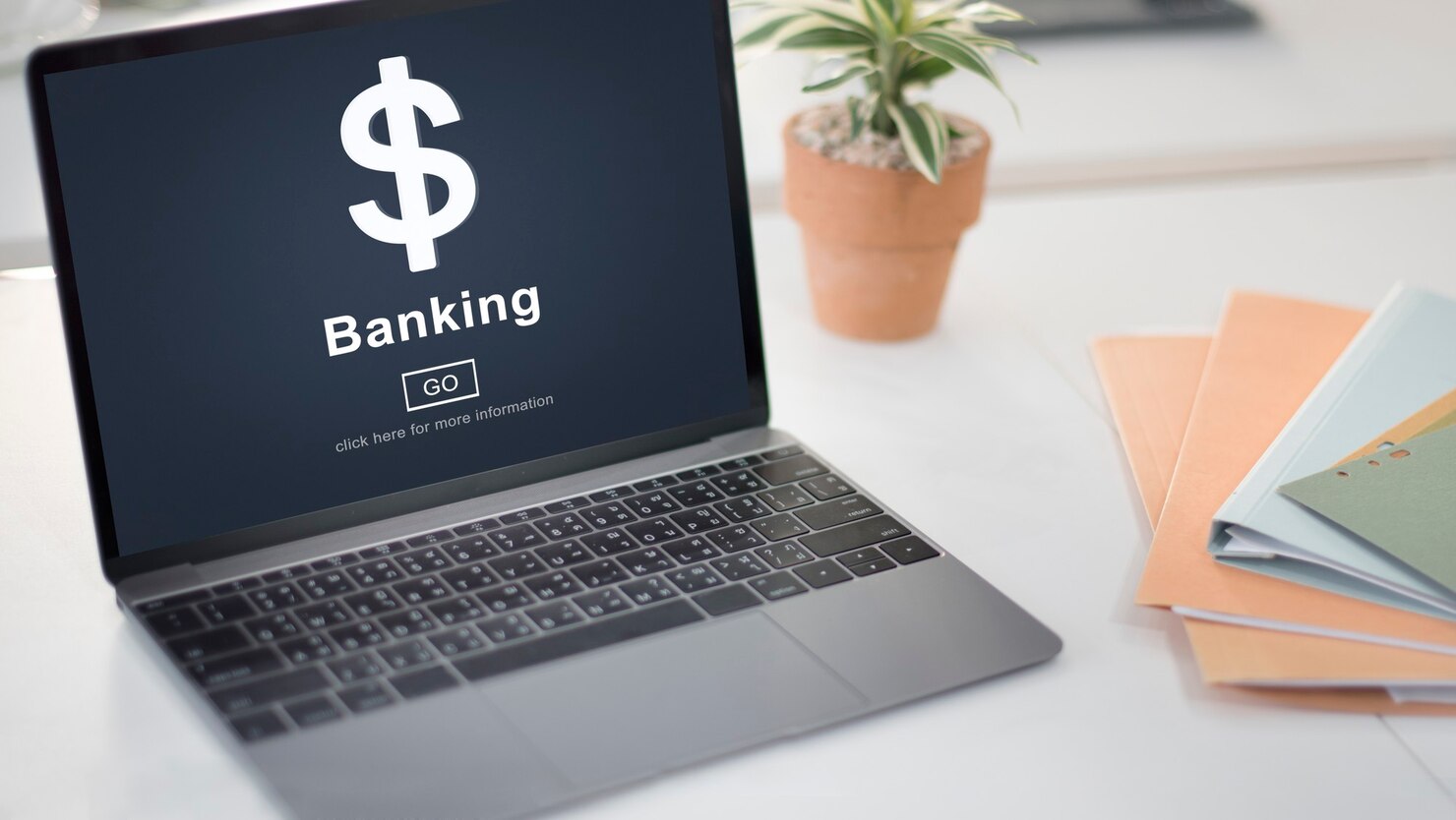How Blockchain is Disrupting Traditional Banking Systems
Technology is reshaping the financial industry, and blockchain is leading the transformation. Blockchain is a decentralised technology that makes transactions secure, transparent, and faster. Unlike traditional banking, blockchain eliminates intermediaries, reduces transaction costs, and enhances security. This guide shows how blockchain affects traditional banking. It covers its benefits, challenges, and future possibilities. Pro Tip: If

Technology is reshaping the financial industry, and blockchain is leading the transformation. Blockchain is a decentralised technology that makes transactions secure, transparent, and faster. Unlike traditional banking, blockchain eliminates intermediaries, reduces transaction costs, and enhances security.
This guide shows how blockchain affects traditional banking. It covers its benefits, challenges, and future possibilities.
Pro Tip:
If you’re new to blockchain in finance, start by exploring how stablecoins work. They’re a great gateway—less volatile than cryptocurrencies and often used in secure, low-cost international transfers.
Quick Guide: Steps to Begin Exploring Blockchain in Banking
- Learn the basics of blockchain—understand decentralisation, transparency, and immutability.
- Try using a digital wallet to explore cryptocurrencies or stablecoins in small transactions.
- Research DeFi platforms to understand alternatives to traditional savings, lending, and payments.
Important:
Blockchain isn’t just a tech upgrade—it’s a financial revolution. It’s dismantling long-standing barriers: costly fees, delayed transactions, and limited access. But the real power lies in its potential to create a more transparent, inclusive, and user-controlled banking system. The shift won’t happen overnight—but ignoring it means missing what could be the biggest evolution in finance since the internet.
Frequently Asked Questions (FAQs)
1. What makes blockchain different from traditional banking?
Blockchain is decentralised and transparent. It allows fast, peer-to-peer transactions without relying on central authorities like banks—cutting costs and increasing efficiency.
2. Is blockchain safe for financial transactions?
Yes—blockchain uses advanced encryption and immutable records, making it highly secure. However, users should still protect private keys and use trusted platforms.
3. What is DeFi, and how does it work?
DeFi, or Decentralised Finance, refers to blockchain-based platforms that offer financial services like lending, borrowing, and trading without traditional intermediaries. Everything is automated through smart contracts.
4. Can blockchain help the unbanked population?
Absolutely. Blockchain allows anyone with internet access to store, send, and receive money without needing a traditional bank account, making financial inclusion more attainable.
5. Are governments adopting blockchain technology?
Yes. Many countries are exploring or developing Central Bank Digital Currencies (CBDCs) to enhance security, transparency, and efficiency in their national payment systems.

Understanding Blockchain in Banking
What is Blockchain?
Blockchain is a decentralised digital diary that records transactions across countless computers. Once a transaction finds its place, it’s set in stone—unchangeable and indelible. Each block of transactions is tightly woven into the chain, creating a tapestry of security and transparency.
Key Characteristics:
- Decentralisation: No central authority controls the network.
- Transparency: All participants can view transaction history.
- Security: Encryption protects data from cyber threats.
How Blockchain Differs from Traditional Banking
| Feature | Traditional Banking | Blockchain Banking |
| Centralisation | Highly centralised | Decentralised |
| Transaction Speed | Slow (1–3 days) | Fast (real-time to minutes) |
| Fees | High (intermediary costs) | Low (minimal or no middlemen) |
| Transparency | Limited | Fully transparent (public ledger) |
| Security | Vulnerable to fraud | Enhanced security via encryption |

How Blockchain is Transforming Banking Systems
1. Faster and More Secure Transactions
Blockchain removes intermediaries. It allows peer-to-peer (P2P) transactions to settle in minutes.
- Cross-border Payments: Platforms like Ripple (XRP) facilitate international payments at lower costs.
- Smart Contracts: Self-executing contracts ensure payments are only made when conditions are met.
- Real-time Settlements: Blockchain reduces settlement times from days to minutes.
2. Lower Costs and Higher Efficiency
Blockchain reduces operational costs by automating processes and eliminating third parties.
- No Intermediaries: Direct transactions reduce fees.
- Automated Smart Contracts: Lessen the need for manual lending, insurance, and compliance processes.
3. Enhanced Security and Fraud Prevention
Blockchain uses cryptographic encryption. This keeps data safe from changes, which helps prevent fraud and hacking. Blockchain uses cryptographic encryption to protect transactions, making it extremely difficult for cybercriminals to alter data.
- Immutable Transaction Records: Data cannot be altered, ensuring accuracy.
- Identity Verification: Blockchain-based digital IDs improve KYC (Know Your Customer) processes.
- Multi-signature Authentication: Multiple authorisations enhance transaction security.
4. Greater Financial Inclusion
Blockchain helps people access financial services without needing a bank.
- Cryptocurrencies: Users can send, receive, and store money without a traditional bank.
- DeFi, or Decentralized Finance: It is revolutionising the financial landscape. Platforms like Aave and Compound provide lending and investing services. They do this without any middlemen. By connecting users directly, they pave the way for financial freedom and innovation. Dive in and discover a world where your money truly belongs to you. Low-cost Remittances: Migrant workers can transfer money internationally without high fees.

Common Use Cases of Blockchain in Banking
1. Digital Payments
Blockchain simplifies digital payments by removing banks from the process.
- Cryptocurrency Payments: More businesses accept cryptocurrencies, reducing dependence on banking networks.
- Micropayments: Blockchain enables small payments with minimal transaction costs.
2. Trade Finance and Supply Chain Management
Blockchain ensures transparency in international trade by automating and digitising documents.
- Real-time Tracking: Companies can track goods and shipments easily.
- Automated Documentation: Blockchain automates letters of credit and contracts.
3. Lending and Borrowing
DeFi platforms allow users to lend and borrow funds without banks.
- No Credit Checks: Borrowers secure loans using crypto assets as collateral.
- Higher Returns: Lenders earn interest directly, bypassing bank markups.
4. Fraud Detection and Compliance
Blockchain helps detect fraudulent activities and ensures compliance.
- Audit Transparency: Regulators can verify transaction history.
- Regulatory Compliance: Blockchain aids in adhering to AML (Anti-Money Laundering) and KYC requirements.
Challenges and Risks of Blockchain Banking
1. Regulatory Uncertainty
Governments are still developing regulations to manage blockchain banking. Compliance with AML and tax laws remains a concern.
2. Scalability Issues
Public blockchains face limitations in processing large transaction volumes. Solutions like Layer 2 (Lightning Network, Polygon) aim to improve speed.
3. High Energy Consumption
In the vast digital landscape, blockchain networks like Bitcoin burn a hefty amount of energy for mining. Enter the new contenders—models like Proof-of-Stake (PoS), leading the charge to address this critical concern.
4. Cryptocurrency Volatility
Blockchain services are often riding the wild waves of cryptocurrency volatility. Enter stablecoins and CBDCs—your life vests in the turbulent crypto sea. These digital currencies stabilise the ride, minimising risk and promoting confidence in the blockchain realm.
5. Enhanced Customer Experience
Blockchain revolutionises your experience, fast-tracking financial services into the future. There are no more waiting days for international payments to clear; now, they glide seamlessly. Track your transactions in real-time, turning uncertainty into clarity with a simple click.
Enter smart contracts, your digital allies that automate complex processes. From swift loan approvals to hassle-free insurance claims, they banish delays and errors. Experience better transparency and security with each transaction. You hold the keys to your financial kingdom.
As blockchain’s roots dig deeper, personalised financial services will flourish. Seamless user experiences aren’t just the goal; they’re the new standard. Trust in financial institutions grows, powered by blockchain’s unwavering integrity. Welcome to the era of empowered finance!
The Future of Blockchain in Banking
1. Central Bank Digital Currencies (CBDCs)
Governments are creating CBDCs to improve payment security and efficiency.
2. Bank Partnerships with Blockchain Firms
Banks are collaborating with blockchain companies to improve compliance, remittances, and cross-border payments.
3. Growth of Decentralised Banking
As DeFi platforms grow, more people will likely move from traditional banks to decentralised options.
Conclusion: The Impact of Blockchain on Financial Systems
Blockchain is turning the world of banking on its head. With lightning-fast transactions and secure services, it’s redefining financial landscapes. It cuts out middlemen, which reduces fraud and increases transparency. This makes finance easier for everyone to access. Challenges such as regulatory hurdles and scalability are significant. However, innovations like CBDCs and DeFi bring hope. As financial institutions evolve, blockchain will be the compass guiding the future of global finance.